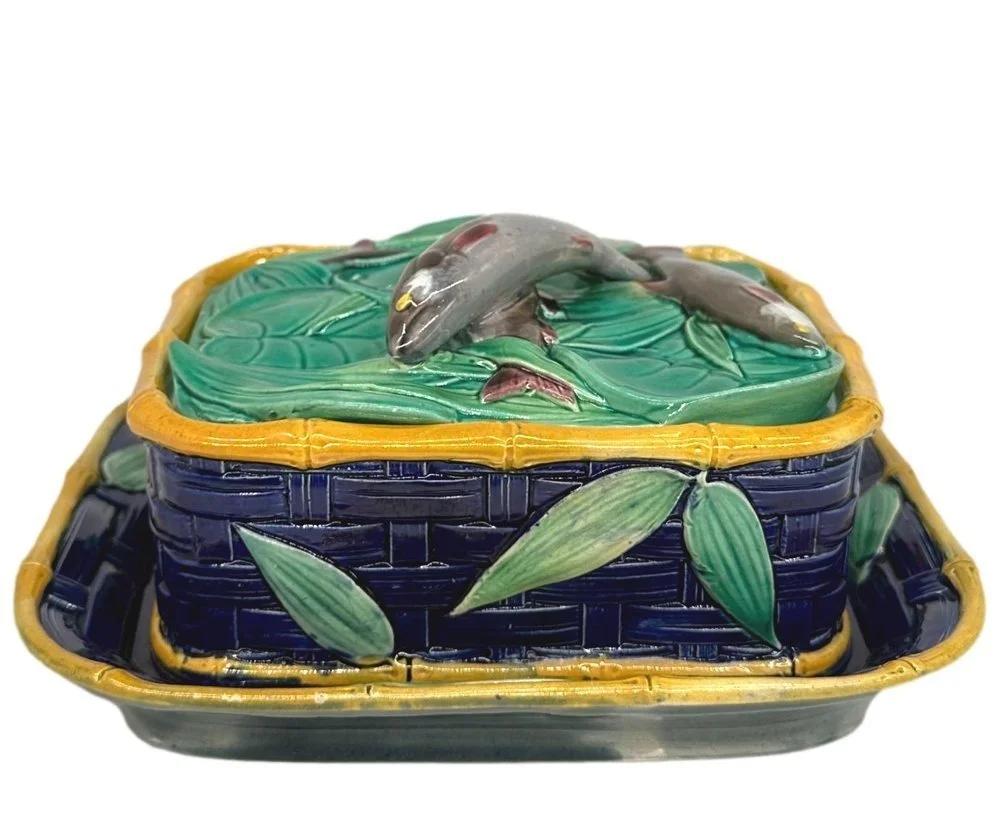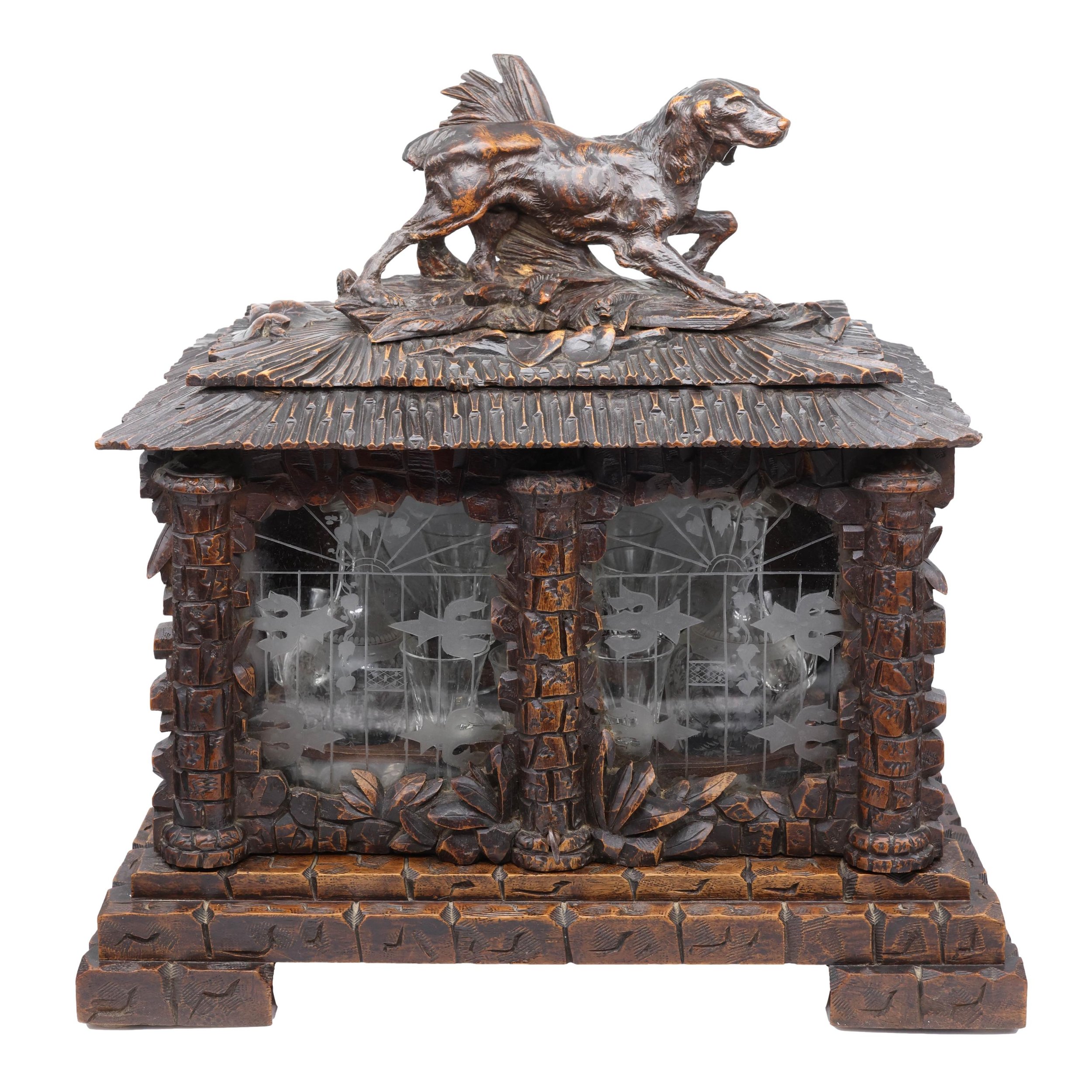 Image 1 of 20
Image 1 of 20

 Image 2 of 20
Image 2 of 20

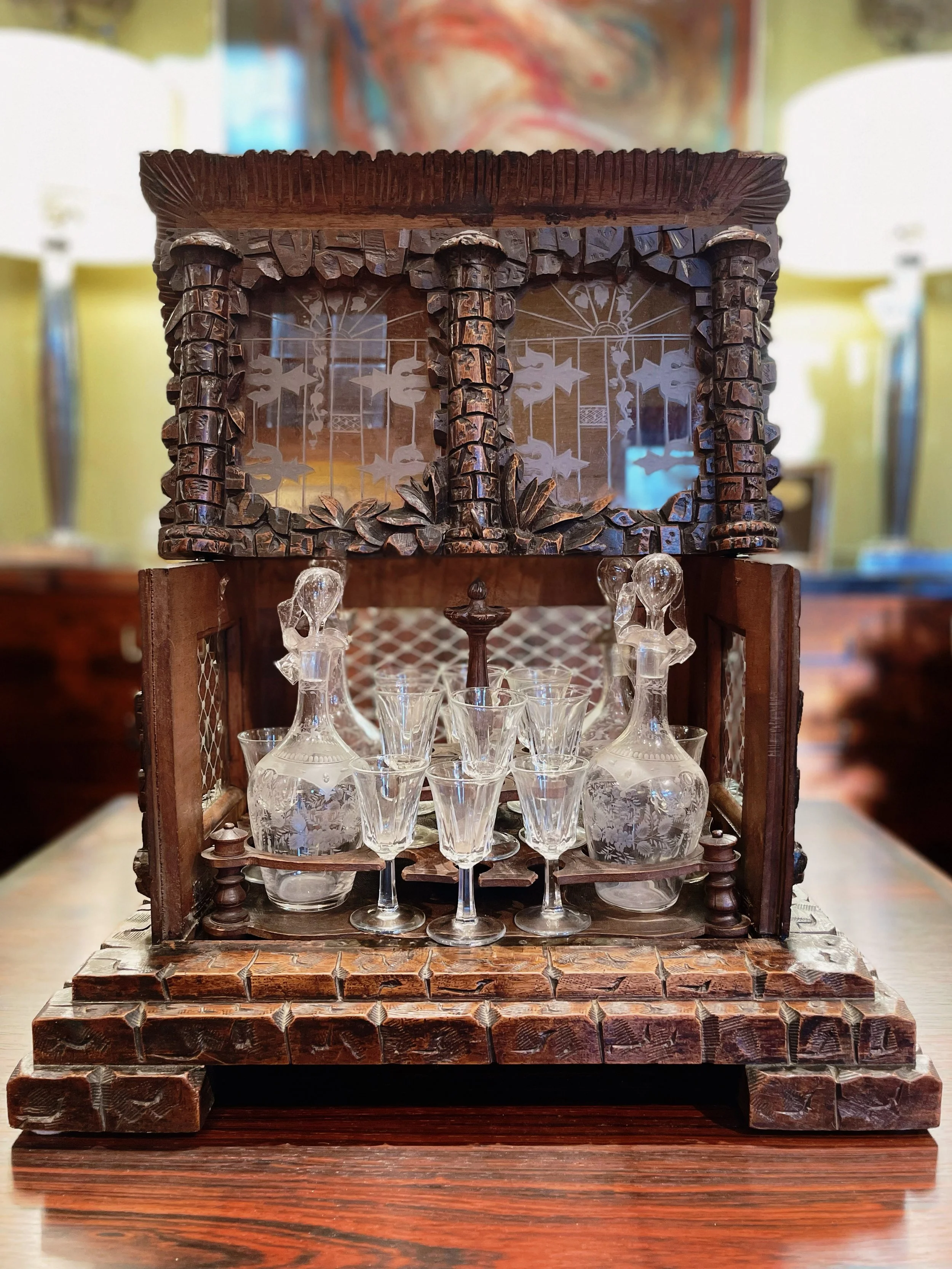 Image 3 of 20
Image 3 of 20

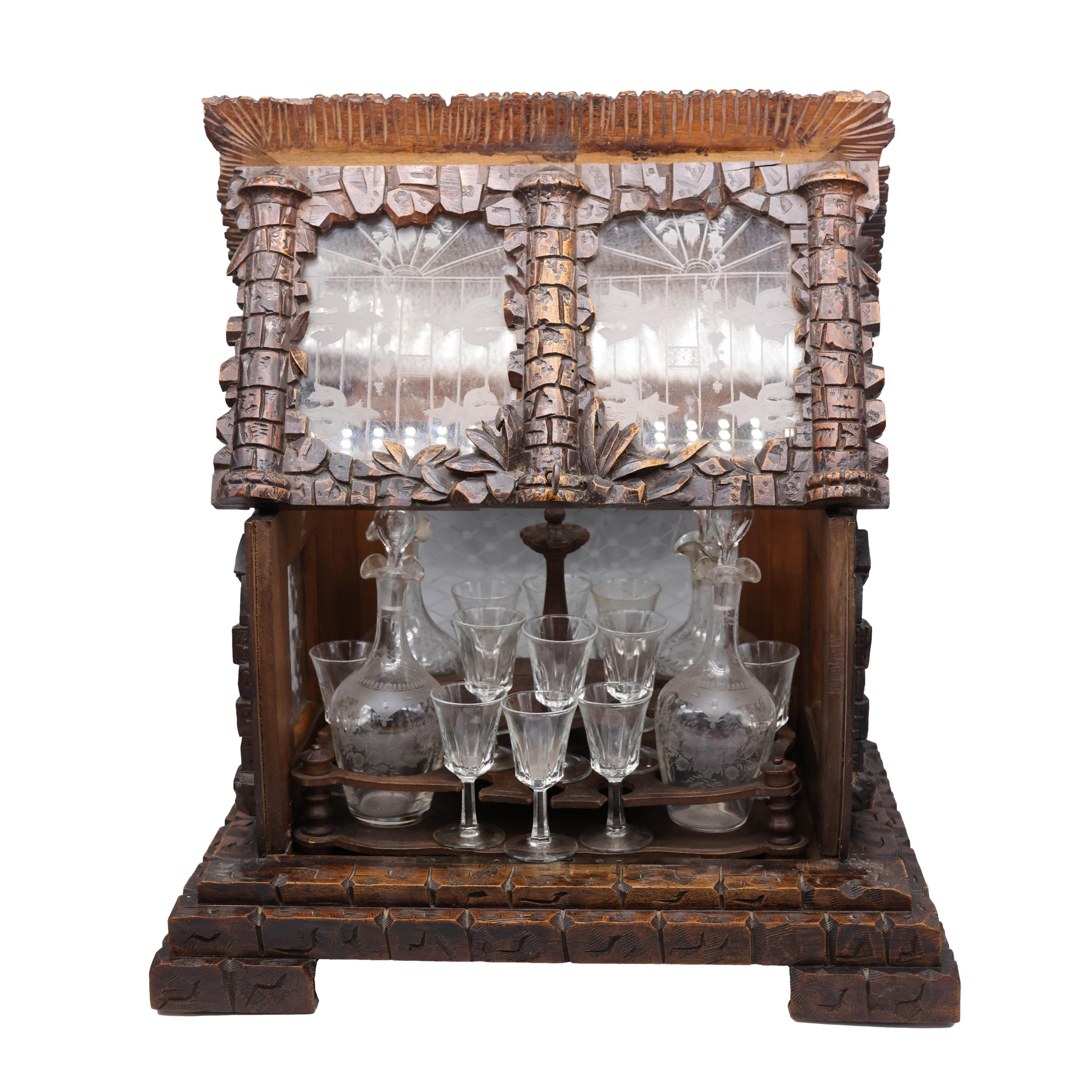 Image 4 of 20
Image 4 of 20

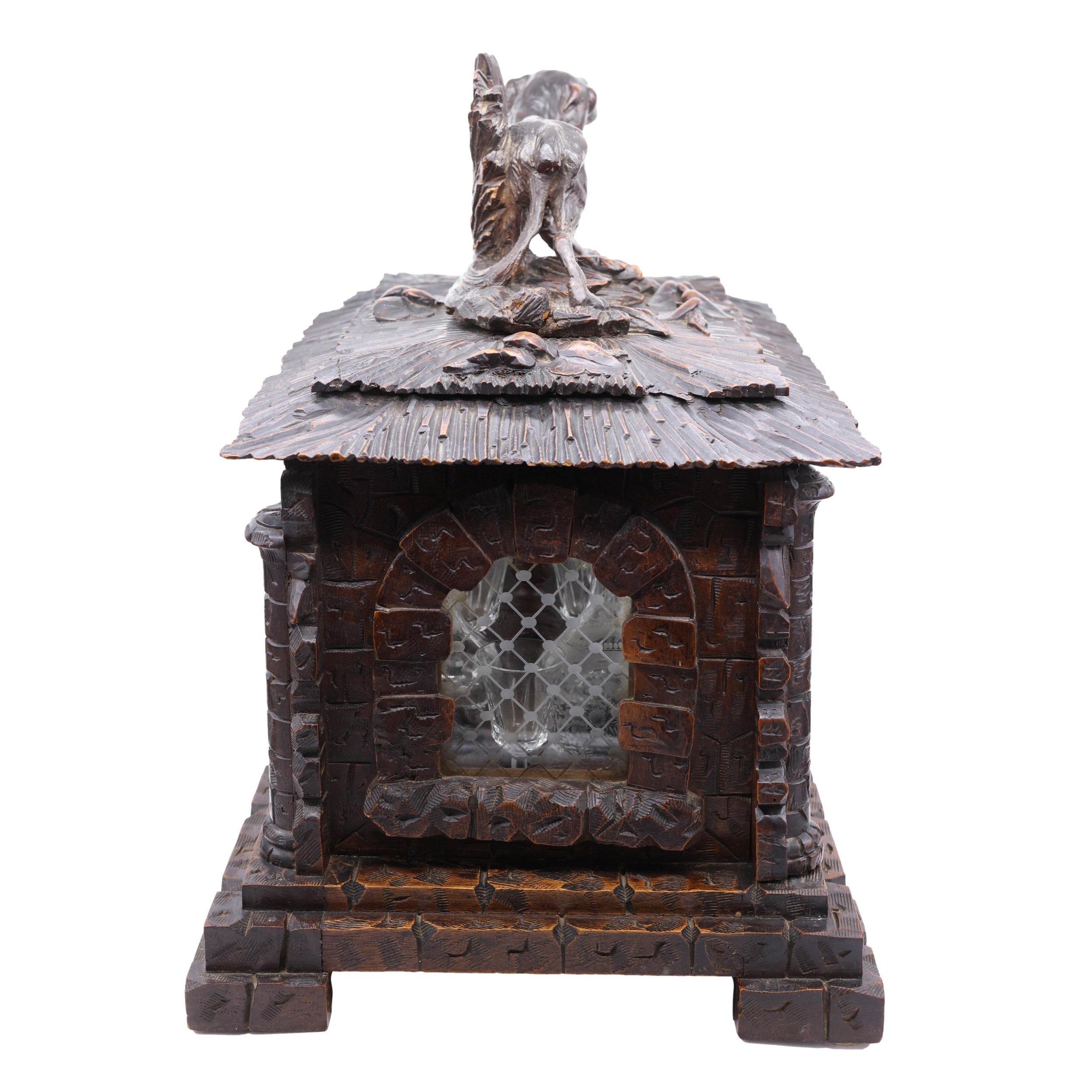 Image 5 of 20
Image 5 of 20

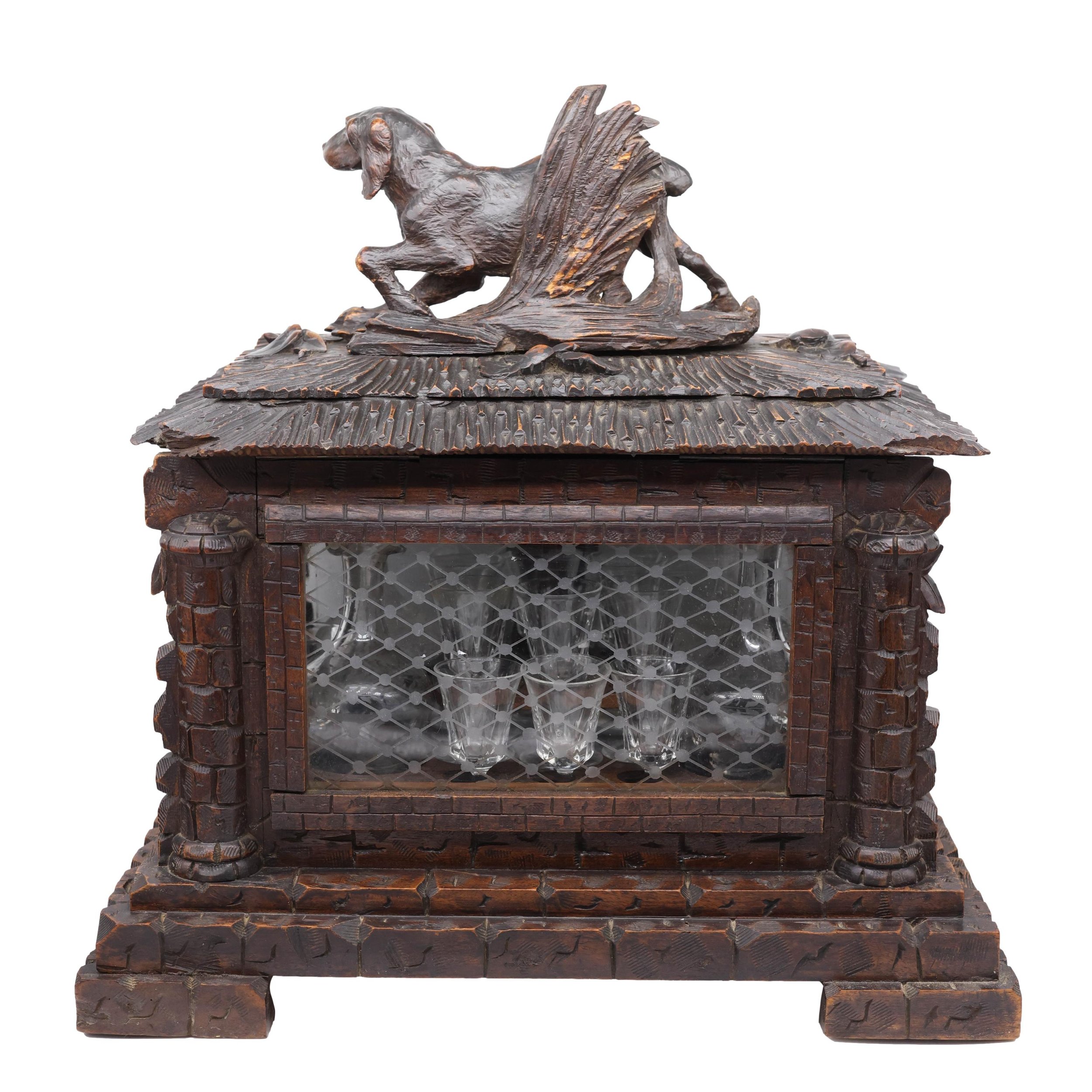 Image 6 of 20
Image 6 of 20

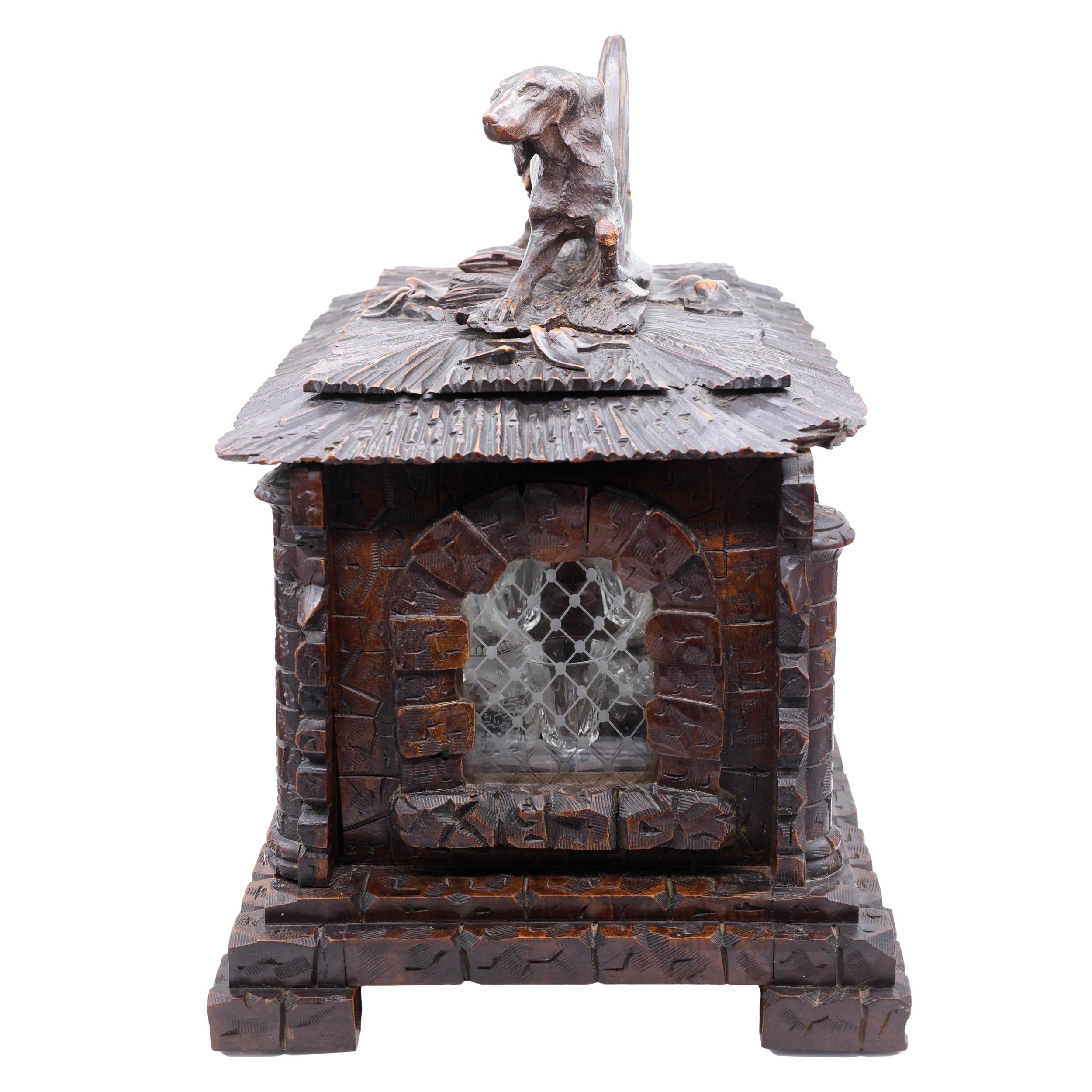 Image 7 of 20
Image 7 of 20

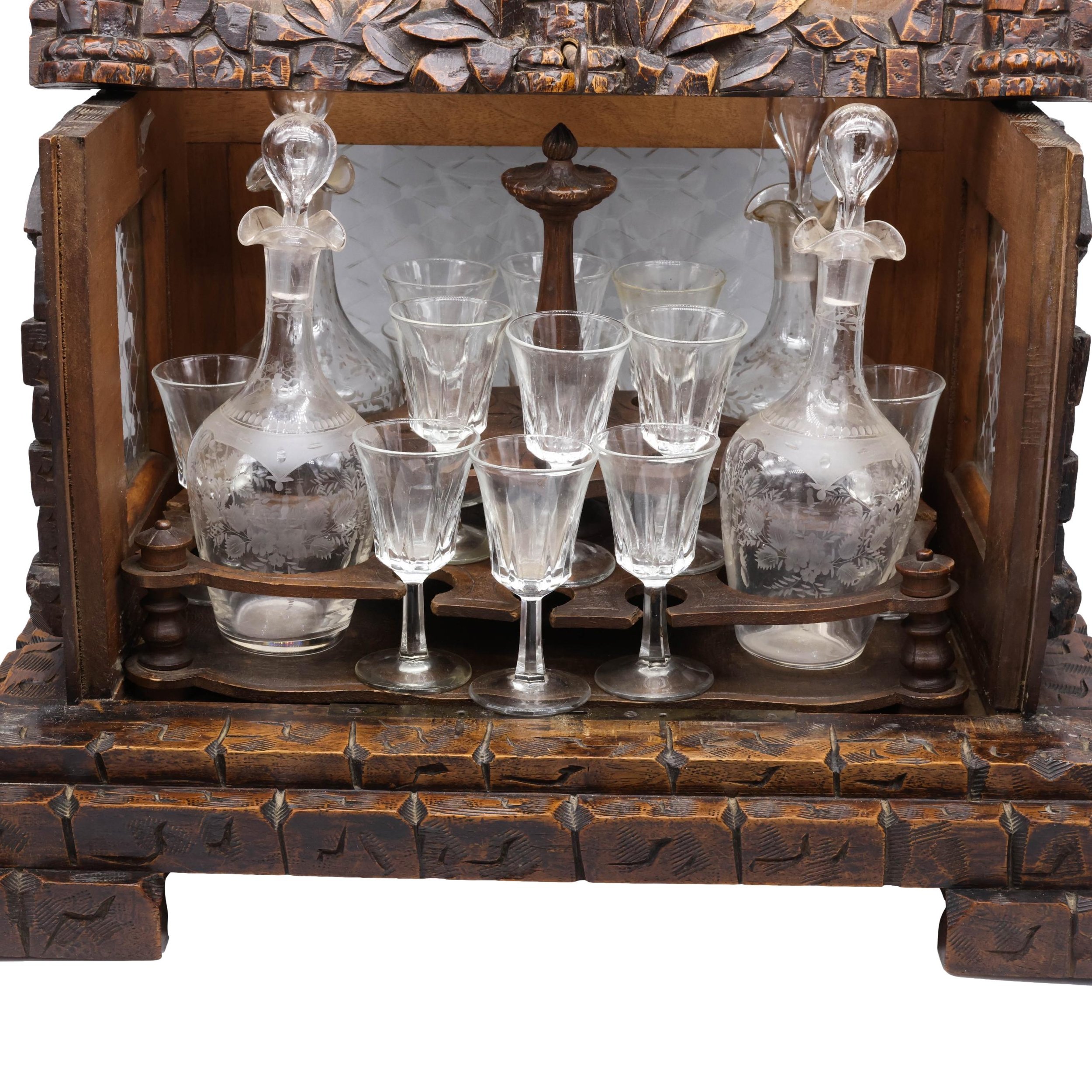 Image 8 of 20
Image 8 of 20

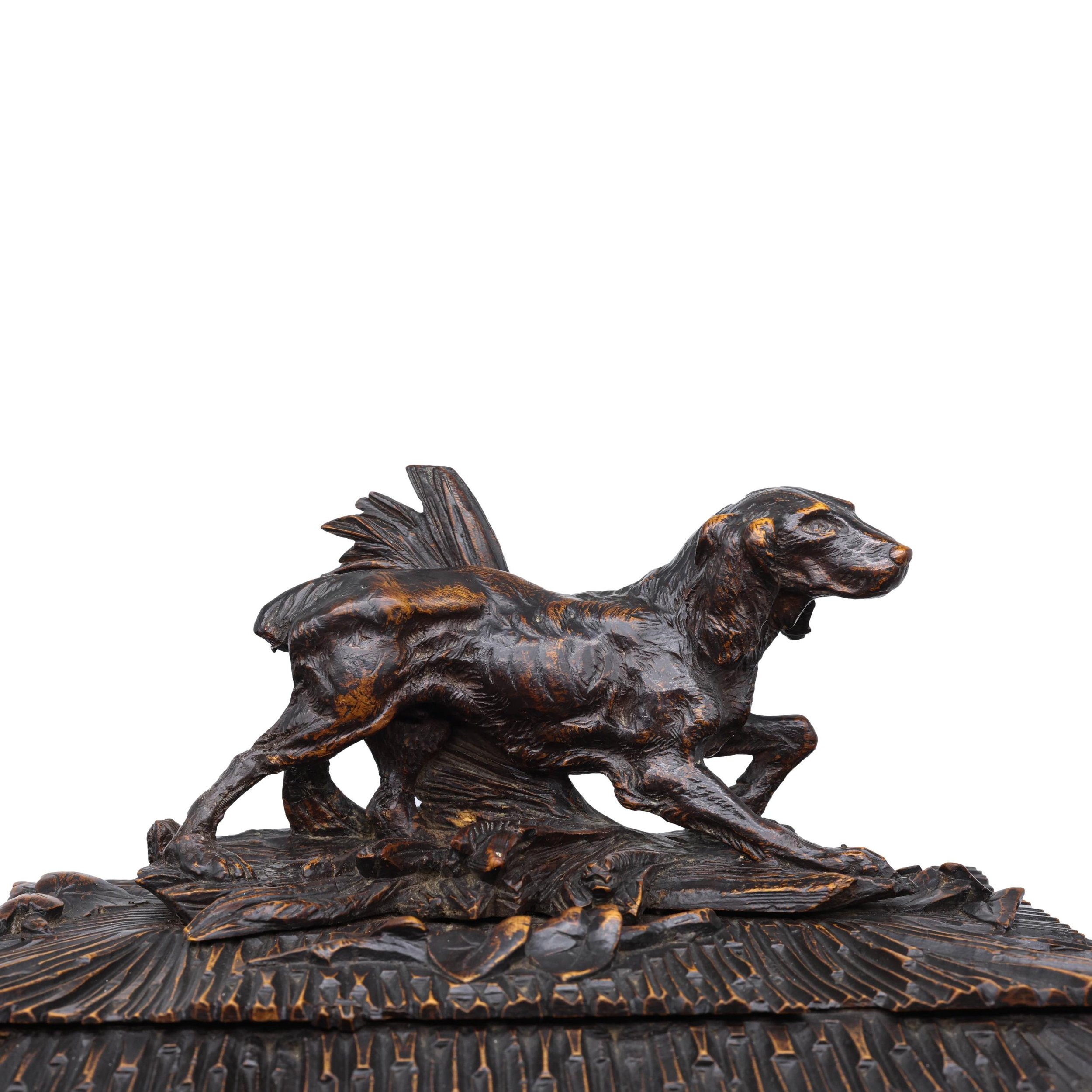 Image 9 of 20
Image 9 of 20

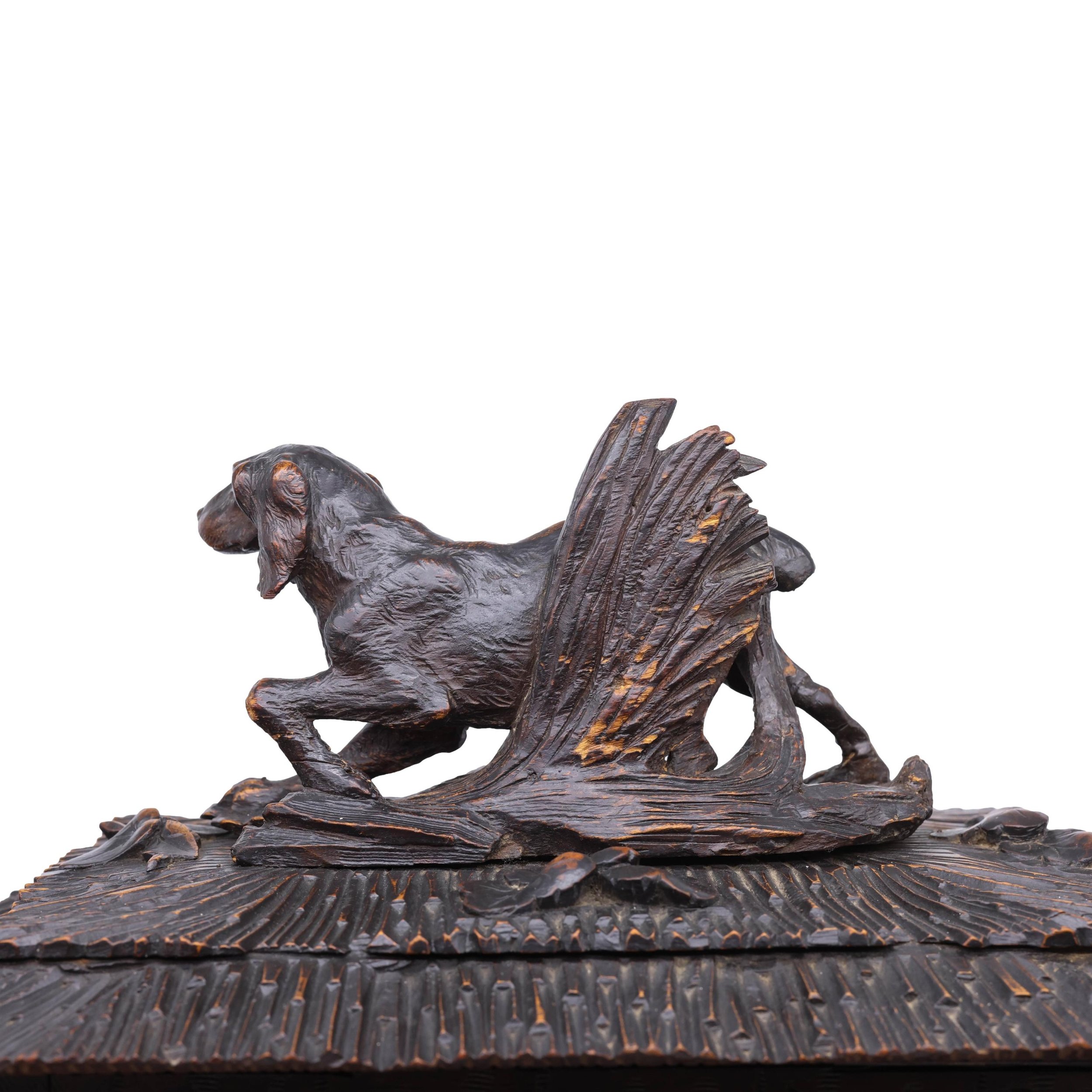 Image 10 of 20
Image 10 of 20

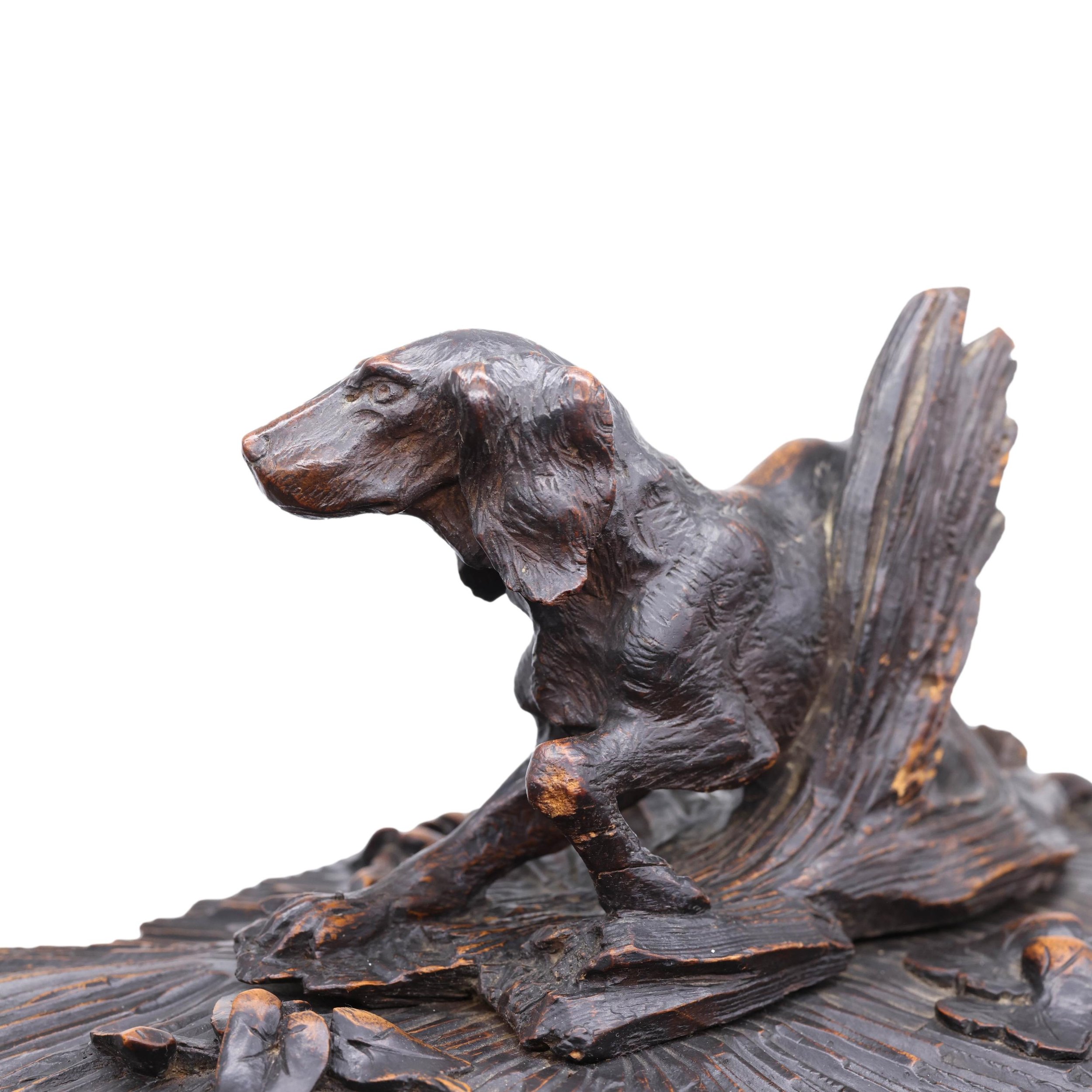 Image 11 of 20
Image 11 of 20

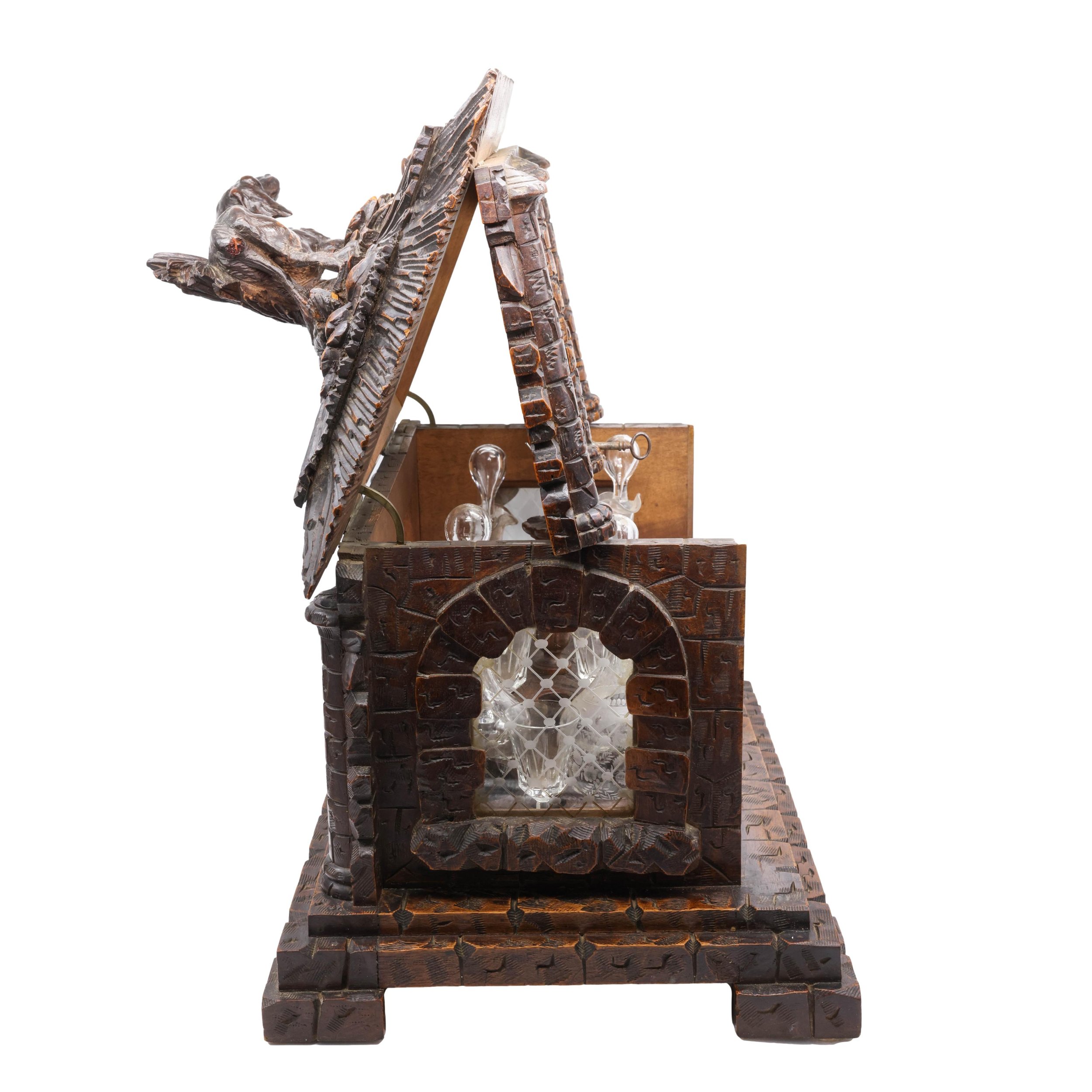 Image 12 of 20
Image 12 of 20

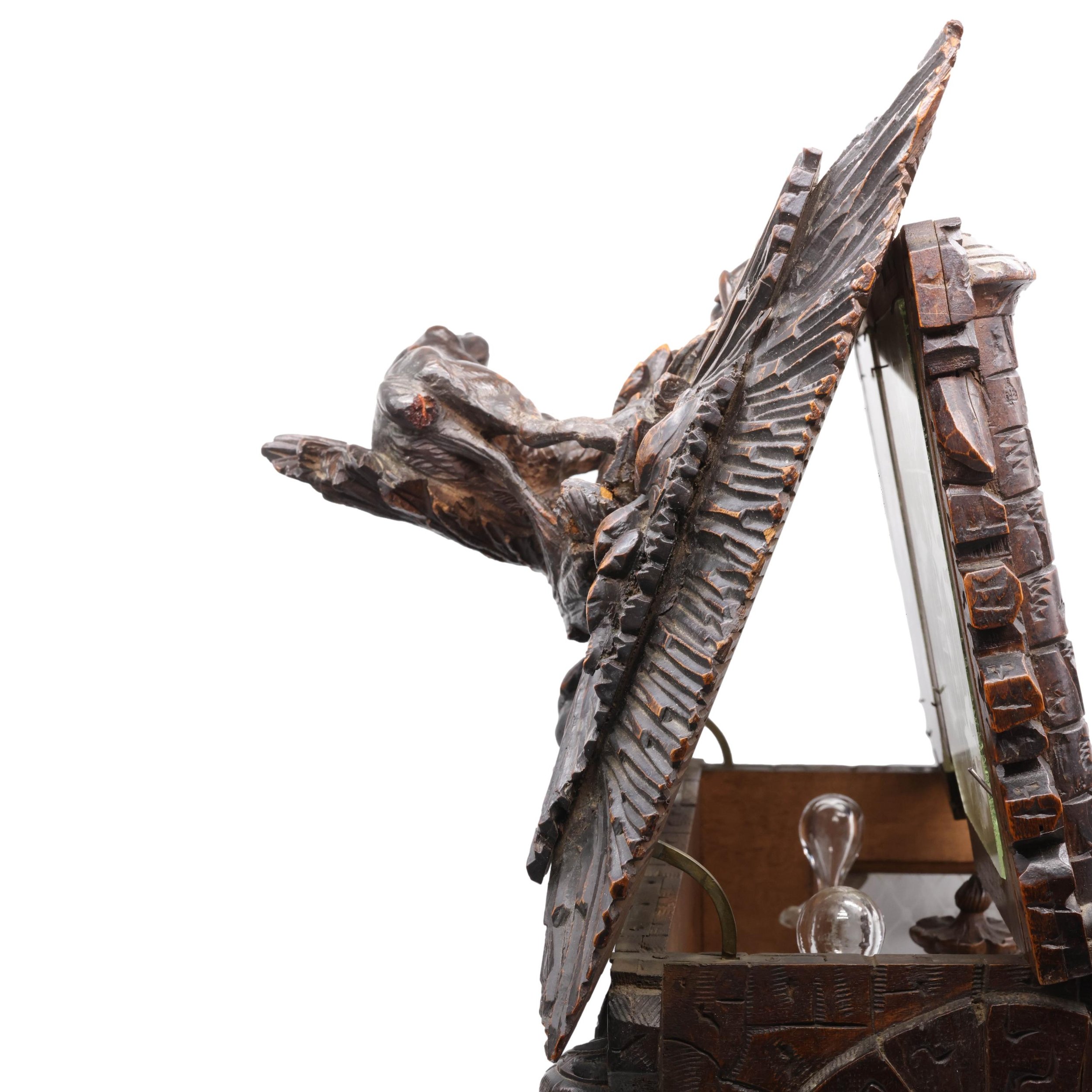 Image 13 of 20
Image 13 of 20

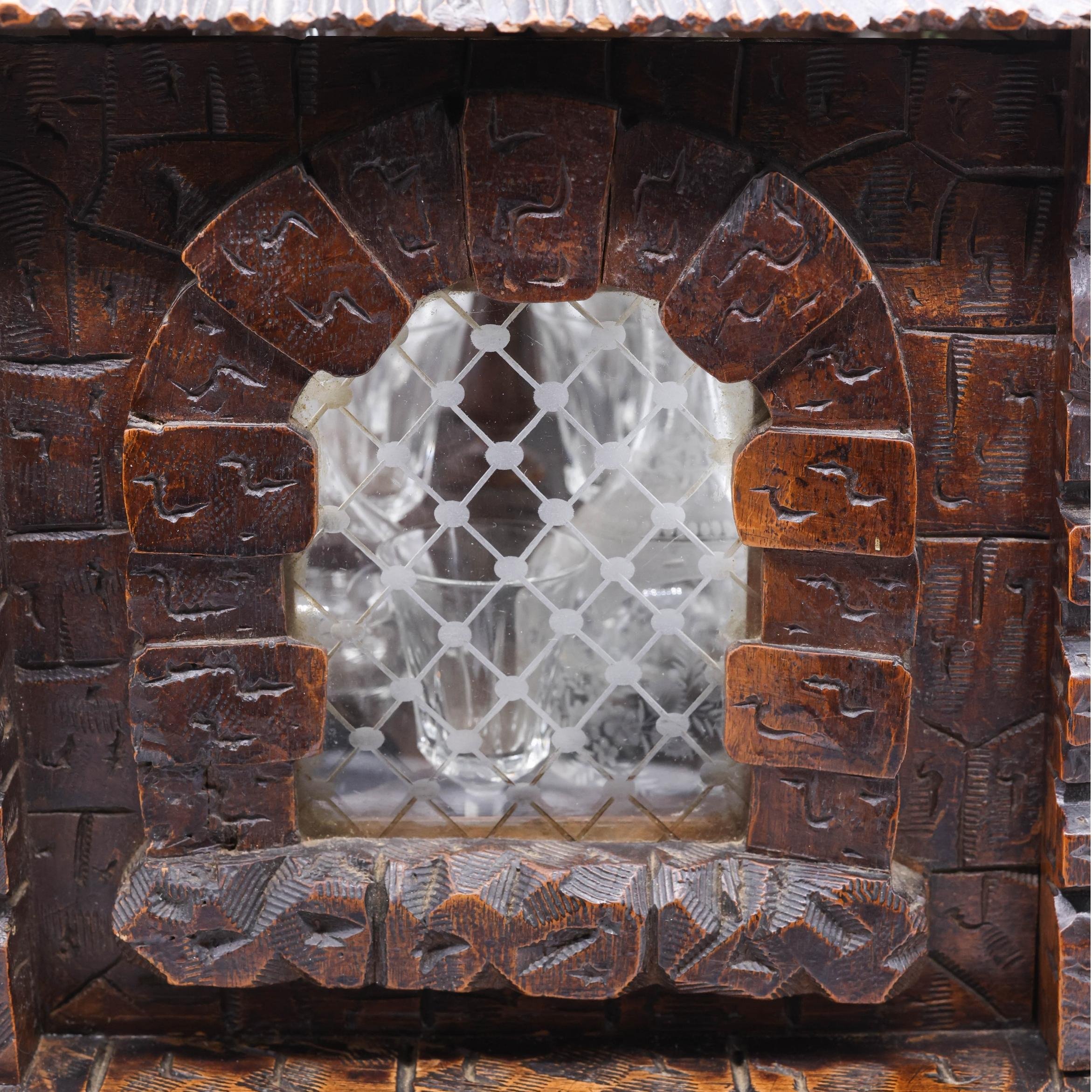 Image 14 of 20
Image 14 of 20

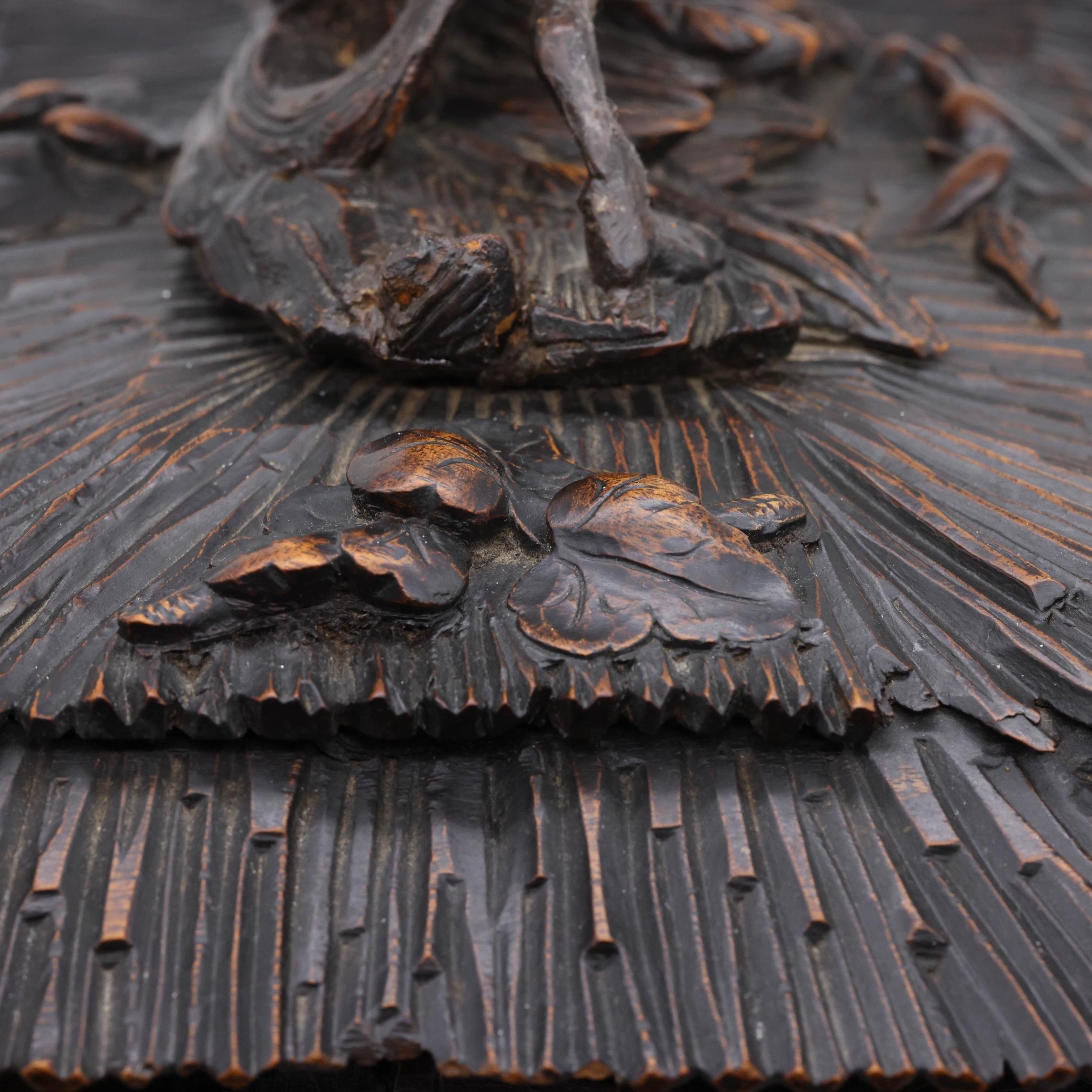 Image 15 of 20
Image 15 of 20

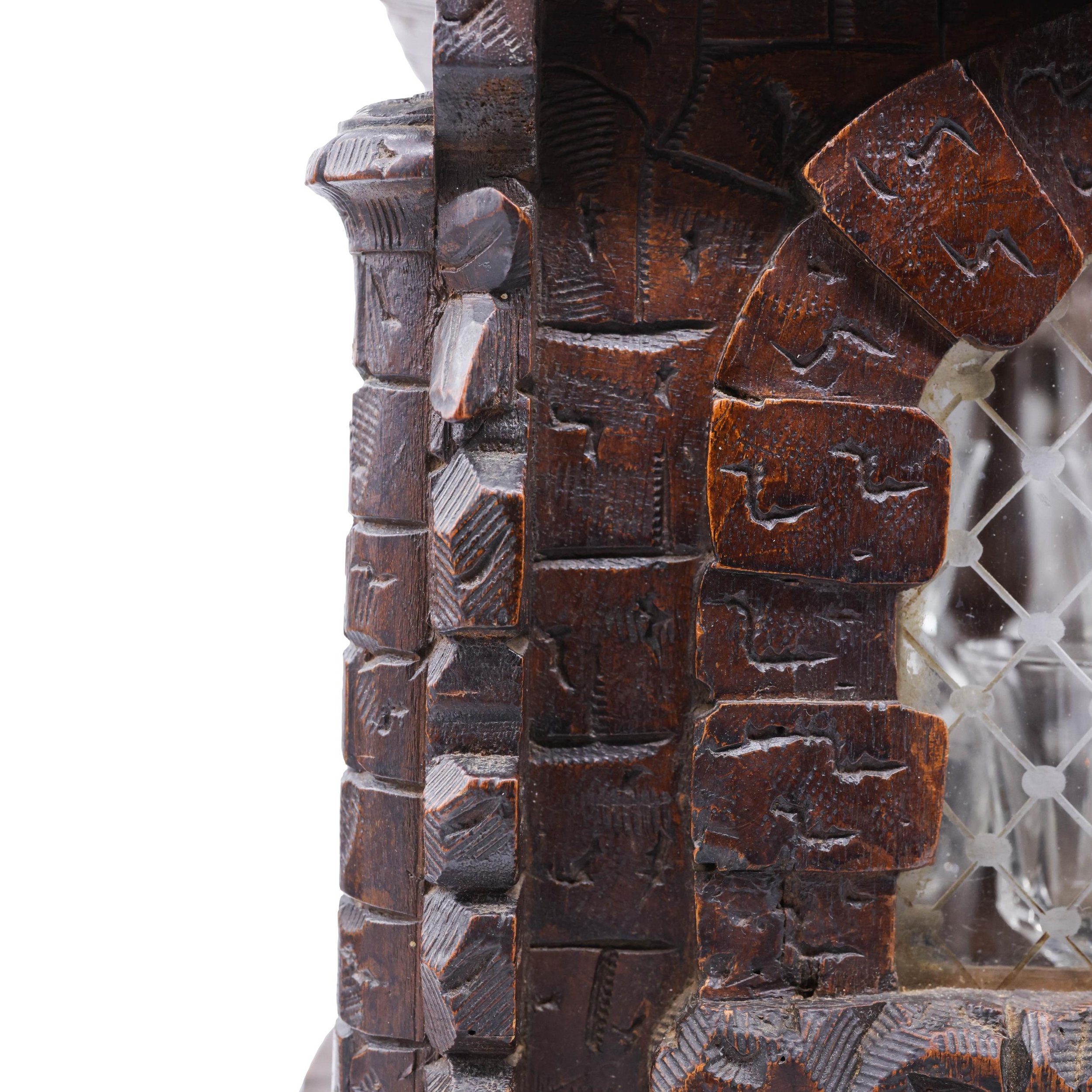 Image 16 of 20
Image 16 of 20

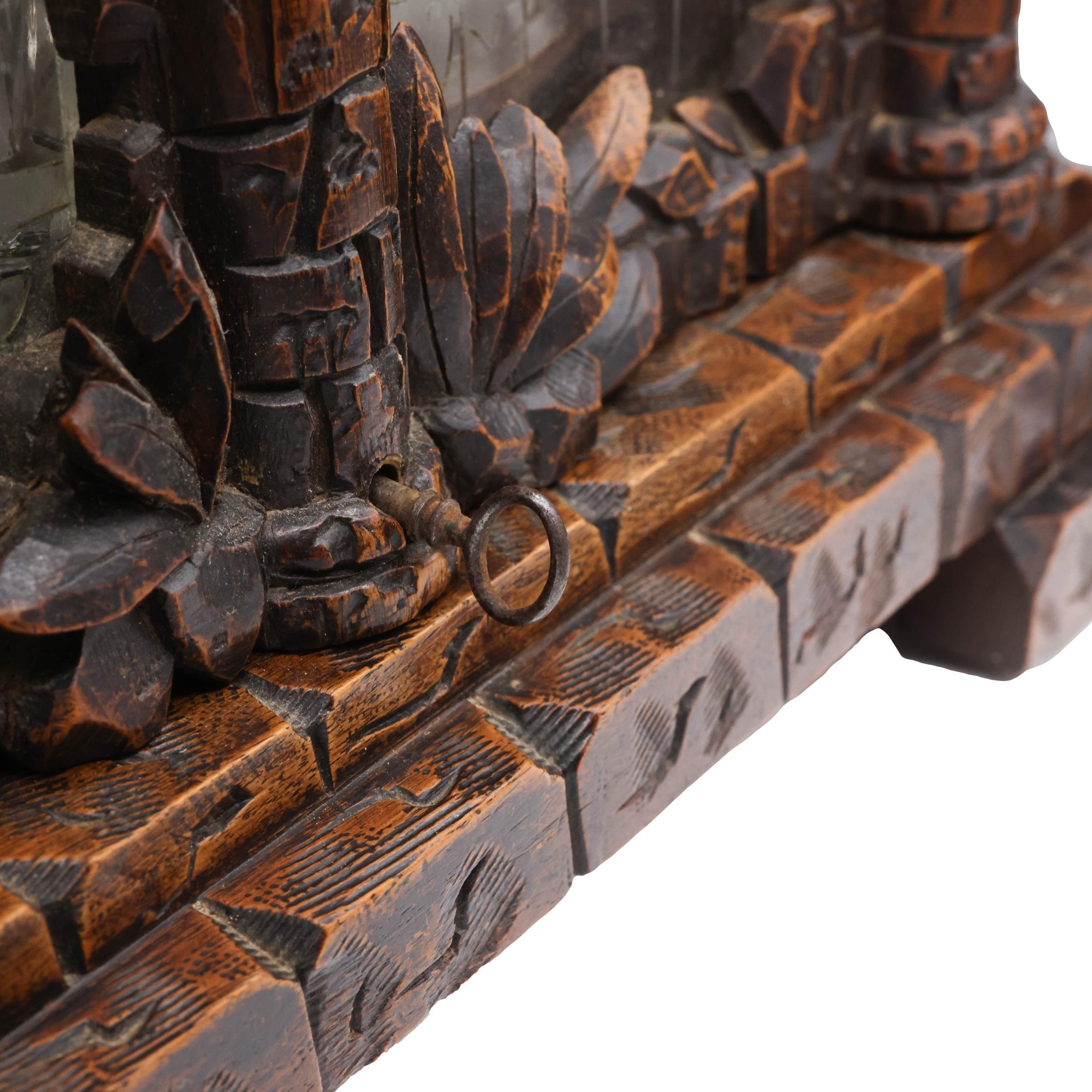 Image 17 of 20
Image 17 of 20

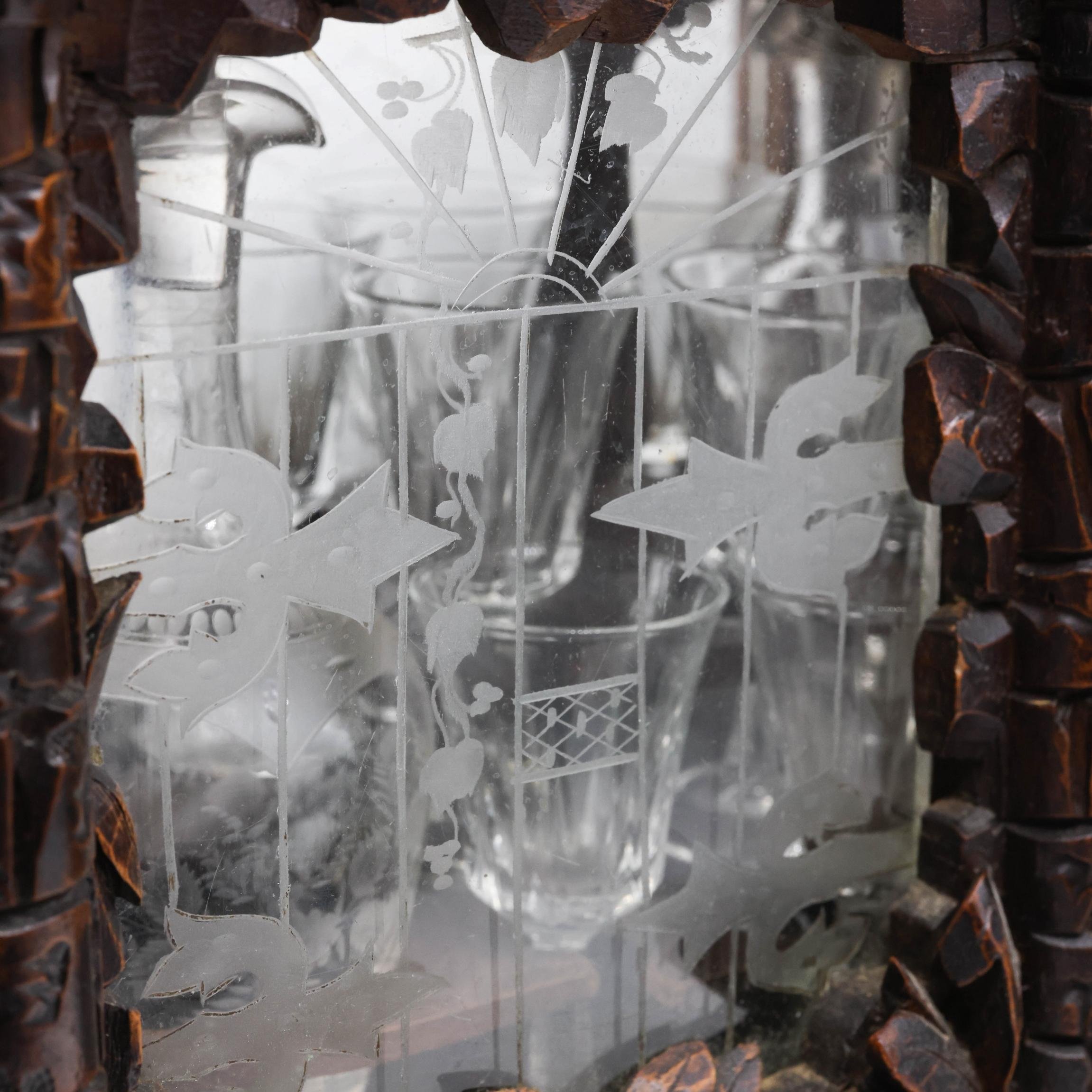 Image 18 of 20
Image 18 of 20

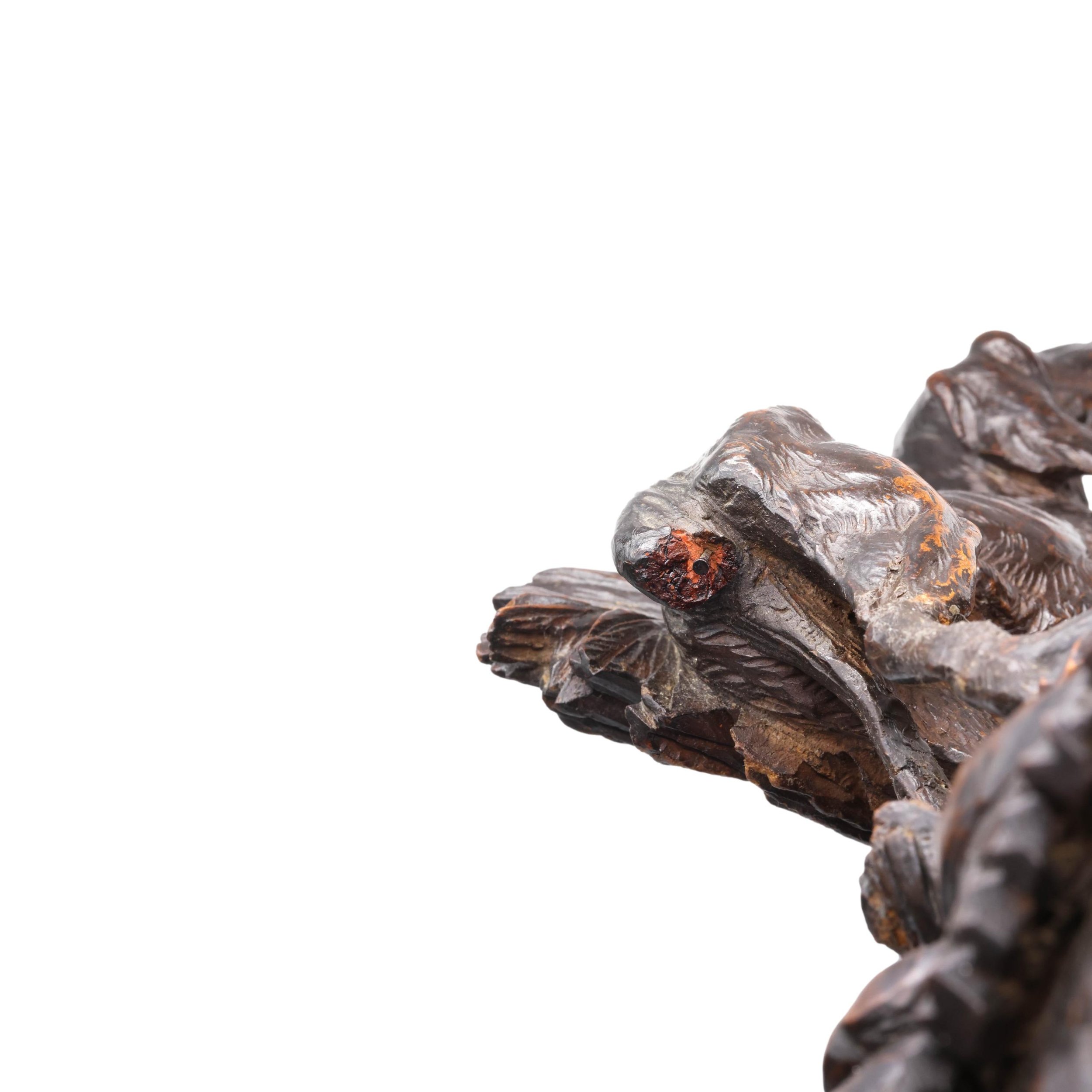 Image 19 of 20
Image 19 of 20

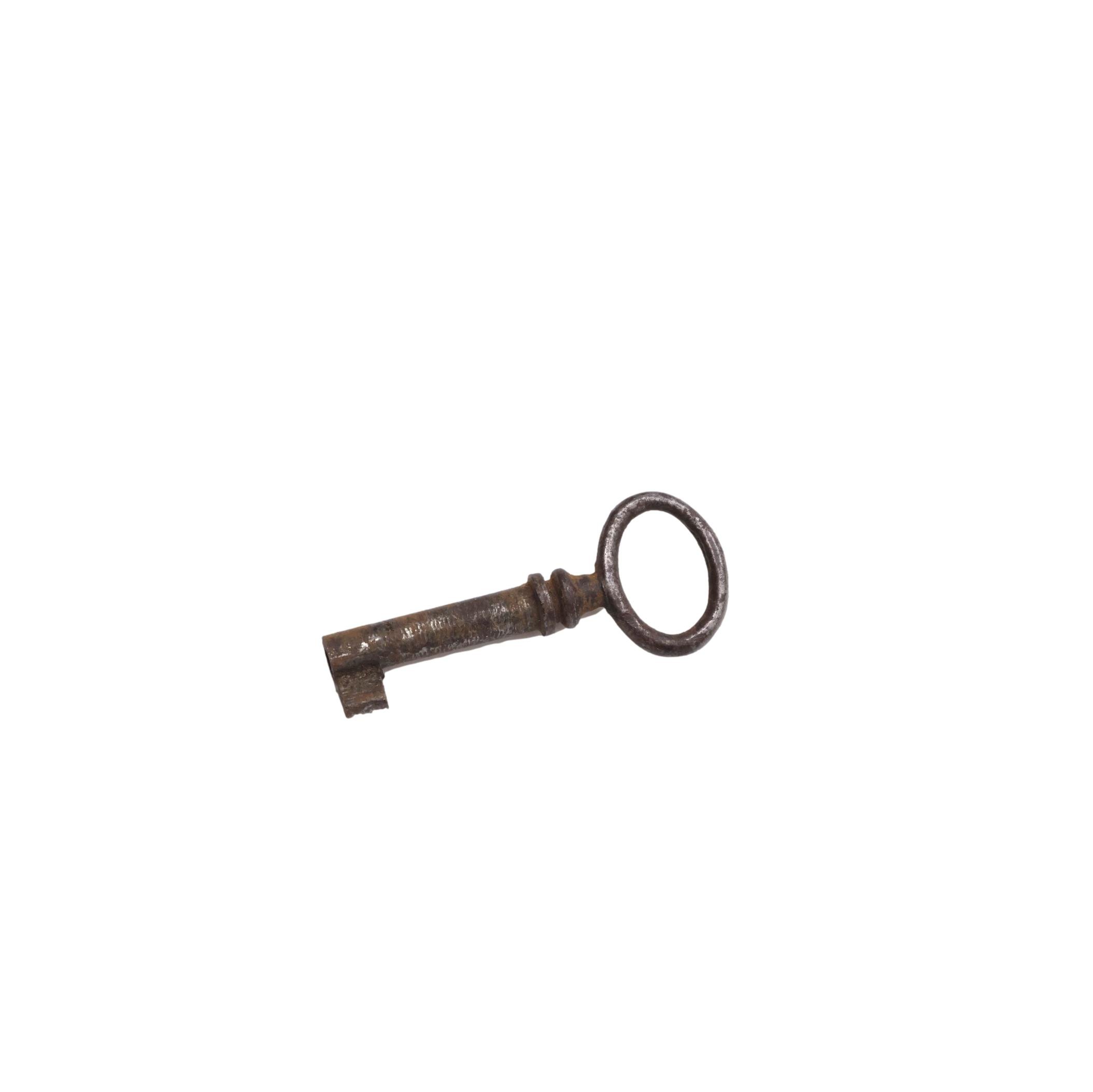 Image 20 of 20
Image 20 of 20

Black Forest Carved Tantalus Set with Sporting Dog, Solid Walnut, Swiss, c. 1885
Exceptional black forest Tantalus set, the box hand-carved in the form of a house with individually carved stones, etched glass leaded windows, and thatched roof, surmounted by a carved hunting dog, with hinged front and top, the fitted interior complete with four (4) etched crystal decanters and stoppers, and fourteen (14) crystal cordial glasses, with working lock and key, Brienz, Switzerland, ca. 1885. Jay Arenski, et al, in his book quotes Swiss Poet Heinrich Federer, who said in his memoirs, "Woodcarving brought riches to the village [of Brienz]. It became all the fashion and no Englishman left the Bernese Highlands without having seen the Giessbach, having eaten a fat roasted eel and having bought a Brienz woodcarving." Arenski goes on to say, "Thus, as the tourist industry flourished and thrived, so did the carvers, selling their wares to the well-heeled visitors."
This fashion had been set in motion by Queen Victoria's visit to the area in April 1868, and by her subsequent inspiration to build a Swiss chalet at Osborne House and fill it with Black Forest Swiss carvings (see footnote).
Book reference:
Jay Areneski, Simon Daniels and Michael Daniels, Swiss Carvings: The Art of the 'Black Forest' 1820-1940, Suffolk, UK: Antique Collectors' Club, Publishers, 2005, pp. 13-14.
Exceptional black forest Tantalus set, the box hand-carved in the form of a house with individually carved stones, etched glass leaded windows, and thatched roof, surmounted by a carved hunting dog, with hinged front and top, the fitted interior complete with four (4) etched crystal decanters and stoppers, and fourteen (14) crystal cordial glasses, with working lock and key, Brienz, Switzerland, ca. 1885. Jay Arenski, et al, in his book quotes Swiss Poet Heinrich Federer, who said in his memoirs, "Woodcarving brought riches to the village [of Brienz]. It became all the fashion and no Englishman left the Bernese Highlands without having seen the Giessbach, having eaten a fat roasted eel and having bought a Brienz woodcarving." Arenski goes on to say, "Thus, as the tourist industry flourished and thrived, so did the carvers, selling their wares to the well-heeled visitors."
This fashion had been set in motion by Queen Victoria's visit to the area in April 1868, and by her subsequent inspiration to build a Swiss chalet at Osborne House and fill it with Black Forest Swiss carvings (see footnote).
Book reference:
Jay Areneski, Simon Daniels and Michael Daniels, Swiss Carvings: The Art of the 'Black Forest' 1820-1940, Suffolk, UK: Antique Collectors' Club, Publishers, 2005, pp. 13-14.
Exceptional black forest Tantalus set, the box hand-carved in the form of a house with individually carved stones, etched glass leaded windows, and thatched roof, surmounted by a carved hunting dog, with hinged front and top, the fitted interior complete with four (4) etched crystal decanters and stoppers, and fourteen (14) crystal cordial glasses, with working lock and key, Brienz, Switzerland, ca. 1885. Jay Arenski, et al, in his book quotes Swiss Poet Heinrich Federer, who said in his memoirs, "Woodcarving brought riches to the village [of Brienz]. It became all the fashion and no Englishman left the Bernese Highlands without having seen the Giessbach, having eaten a fat roasted eel and having bought a Brienz woodcarving." Arenski goes on to say, "Thus, as the tourist industry flourished and thrived, so did the carvers, selling their wares to the well-heeled visitors."
This fashion had been set in motion by Queen Victoria's visit to the area in April 1868, and by her subsequent inspiration to build a Swiss chalet at Osborne House and fill it with Black Forest Swiss carvings (see footnote).
Book reference:
Jay Areneski, Simon Daniels and Michael Daniels, Swiss Carvings: The Art of the 'Black Forest' 1820-1940, Suffolk, UK: Antique Collectors' Club, Publishers, 2005, pp. 13-14.







